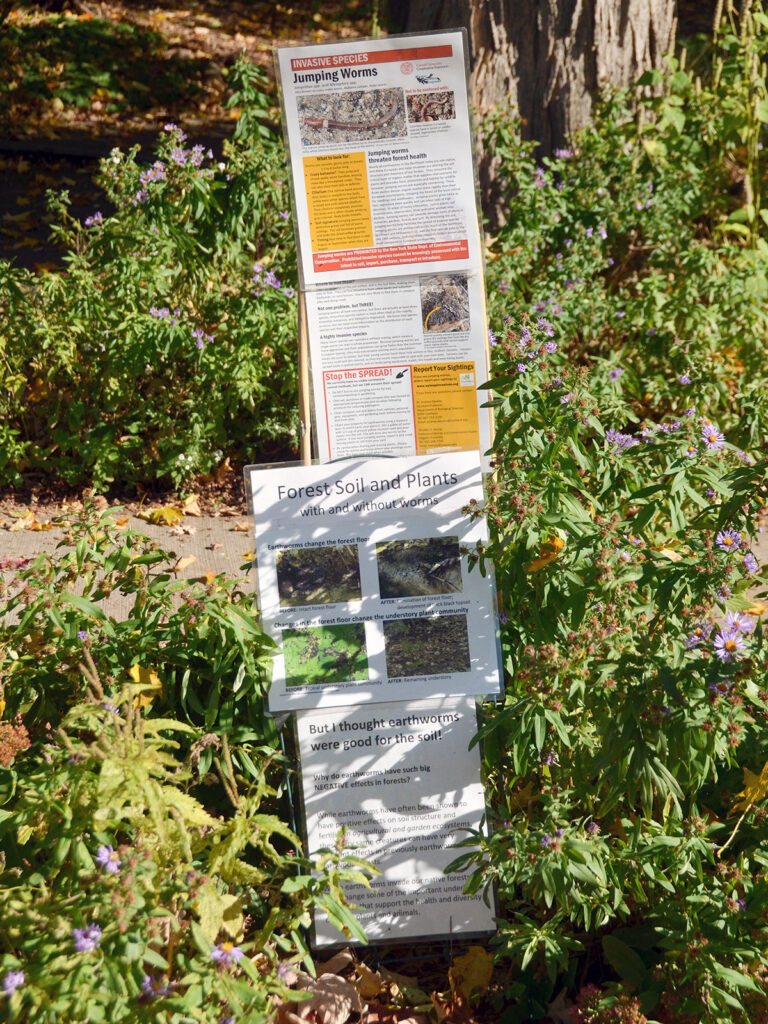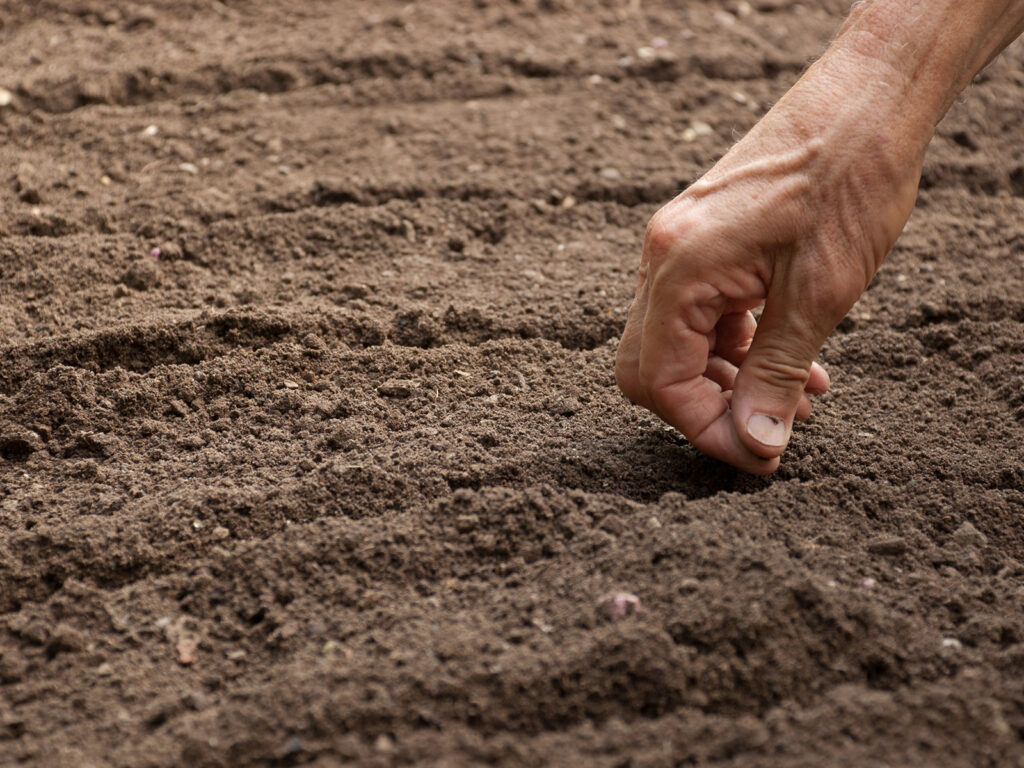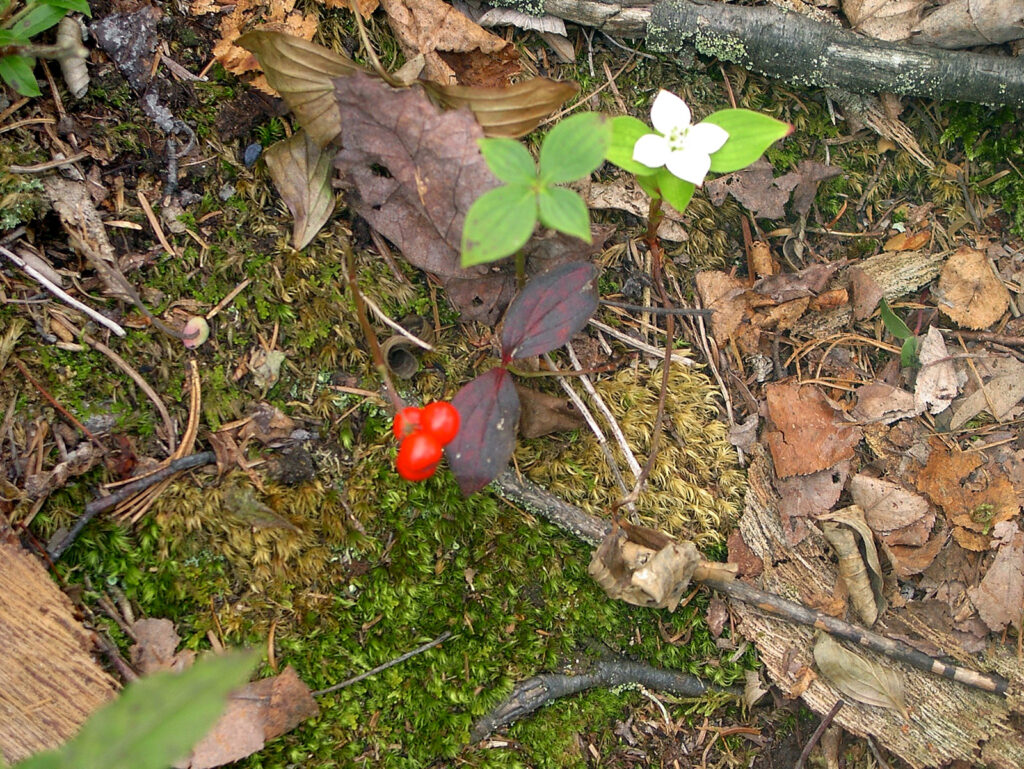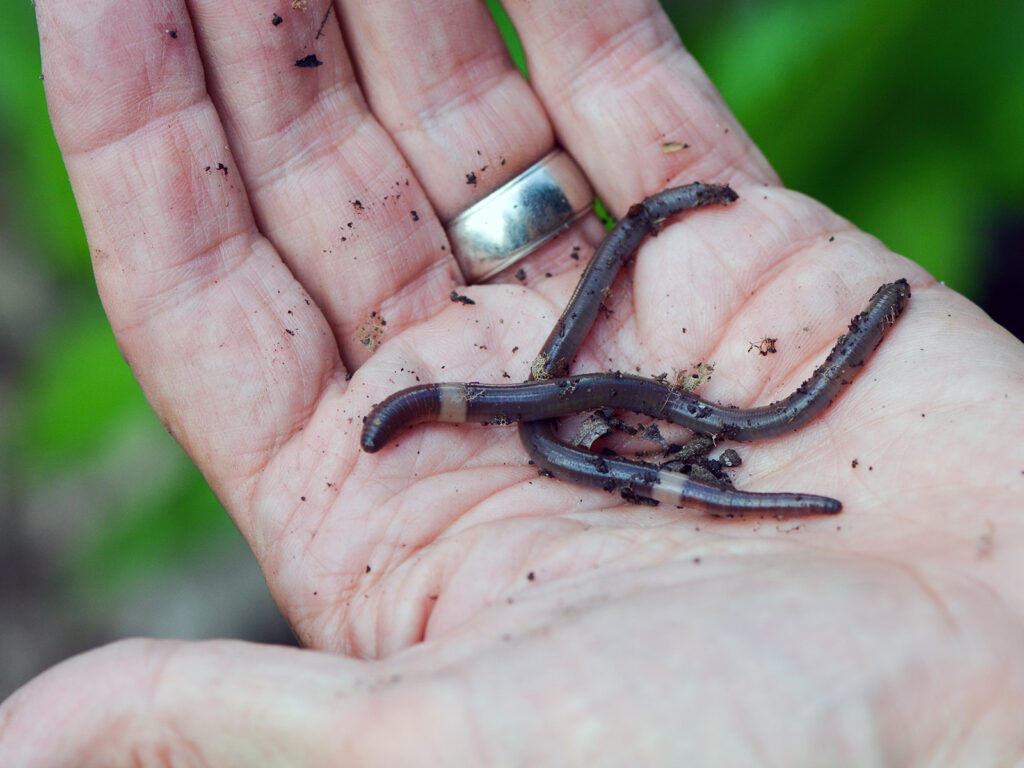Most invasive species are harmful because they’re bad for native plants that are important for native creatures. Non-native earthworms take this a step farther: They damage the very soil plants depend on!

Most people are surprised — astonished and unbelieving would probably be more accurate — to learn that the lowly earthworm is a huge danger to our natural areas.
I was pretty shocked myself when I first learned this while reading William Cullina’s Wildflowers book. I returned to these pages every couple of weeks for a while, certain that I had misread or misunderstood it. (See Cullina’s text in Reflections below.)
But no, it’s true. That’s why I created these signs to spread the word about these invaders.
In the areas of North America covered with glaciers, forests evolved without earthworms. This area includes Central New York (and along about February it’s not hard to believe we were indeed covered with glaciers …) Many of the non-native earthworms here today were brought, intentionally or not, from Europe.
There are some native earthworms here in NYS, but these aren’t likely to be the ones you see in your garden.
But aren’t worms good for gardens?

What makes it so hard to believe that earthworms are non-native invaders is that we all grew up being told that earthworms are good for gardens (not to mention as the prototypical food for robins).
Worms mix the soil, pulling organic material down into their burrows. That can be a good thing for our edible garden.

But think about our forests, such as this Adirondack forest. The “duff layer” (decomposing leaves and so forth) on the top of the soil was there when our woodland plants evolved, and they need that layer. That’s where earthworms cause the most serious problems.
(See the Great Lakes Worm Watch in Resources to see shocking photos of soil with and without worms.)
Now a new, even greater threat

In the last few years, Asian worms have joined the European worms to threaten our forests.
BUT the Asian worms (Amyntha spp) — aka “jumping worms,” “crazy worms,” “Alabama worms,” etc. — are an even greater threat, turning our forest soils into worm castings. Our forests can’t grow in this coffee ground-like soil. (See Reflections below)
Unfortunately, many creatures pay a price for our human errors.
Some people in CNY have already found them in their yards, and it’s not a good sign. Sadly, we discovered these jumping worms in our own yard! We now keep containers of vinegar water around the yard so we can kill them when we find them. Not a pleasant task, but ecosystem health is most important, not that the few we eliminate make a big difference.
The most important change we’ve made is that we no longer share our extra plants unless people already have jumping worms. We don’t want to spread this pestilence beyond our yard. (We’ve also implemented this policy in our HGCNY native plant sales. Of course, there’s no guarantee that nursery-produced plants don’t have jumping worms, so we advise that people bareroot before planting.)
This is a serious threat, on par with other serious problems, such as climate change, since they affect the soil itself, and thus the health of entire ecosystems — ecosystems WE HUMANS depend on.
Resources
- Univ. of Minnesota:
- Great Lakes Worm Watch – a variety of resources, including teaching resources – Sections on the website include photos comparing forests with and without earthworms, and other information
- VIDEO: Non-native earthworms and impacts on forests – a 42-minute, more in-depth discussion of the issue
- Cornell Cooperative Extension:
- Jumping Worm Homeowner Guide – Excellent! (2021)
- Factsheet on jumping worms -(first version)
- SUNY-ESF:
- VIDEO: Nature in your backyard: Earthworms – Excellent! 2-min video
- The Atlantic:
- Maryland Native Plant Society:
- Ecological Landscape Alliance:
- The Joe Gardener Show:
- NRDC:
- The crazy snake invasion you haven’t hear about – Invasive earthworms can’t wriggle their way out of the blame for destroying our forest topsoil.
- Penn State Extension:
- NY Times:
- Smithsonian Environmental Research Center:
- Earthworm invaders – includes a 10-min. video
- Smithsonian Magazine:
- Macoun Field Club:
- Forests build soil. Ours is losing it! What’s going on? – Anecdotal evidence and dramatic photos of the change since earthworms have invaded
- Maryland Invasive Species Council:
- Exotic earthworms (2015) – about European invaders
- The visible invisible (2019) – about Asian jumping worms
- Wisconsin DNR:
- Jumping worms – includes a short video showing their behavior; for more info, explore the For More Info section at the bottom, including pictures of what it does to the soil
- Martha’s Vineyard News:
- Soil sorcerers – Describes unwelcome news that jumping worms can uptake and store large amounts of lead and mercury and pass them along to the birds and other wildlife that eat these worms
Reflections
These Asian earthworms in the genus Amynthas or Metaphire — referred to in attention-grabbing headlines and YouTube videos as “crazy worms” or “snake worms” — do not target a particular organism the way many pests do. Instead, they ravage the soil on which all plant life relies. They process the organic matter in the top layer, including fallen leaves in the forest and garden mulch, so fast that the soil is often reduced to mineral content, a condition hospitable to neither roots nor soil-dwelling organisms.
~ Margaret Roach, As summer takes hold, so do the jumping worms,
NY Times, July 22, 2020 (If you aren’t a NYT subscriber you may have to google the article title)
They [the earthworms] have rapidly taken over habitat left worm-free for millennia when the native species were driven south by the glaciers and had yet to return. … Worms have come to be seen as benign and friendly creatures that help the soil and feed wildlife. They are certainly welcome in the disturbed, heavily cropped soils of vegetable gardens, but I suspect that in undisturbed, stable forest communities, exotic worms can have negative effects.
~ William Cullina, Wildflowers, p. 17 [Note that when the Cullina book was written, he was talking about the European worms.]
